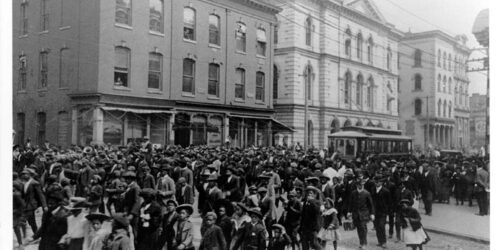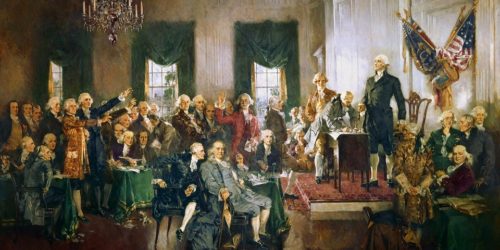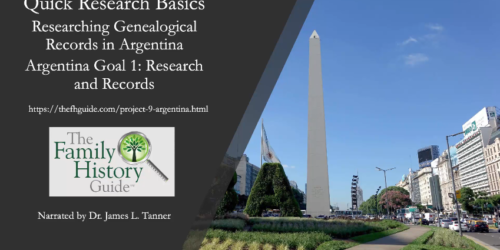Jewish Holidays and Family History
One of the significant benefits of dong family history is the opportunity to learn about cultures and traditions. For our Jewish friends and ancestors, this past weekend introduced the High Holy Days, with two of the most significant holidays on the calendar. Rosh Hashana was celebrated from September 18-20, and Yom Kippur will be coming up September 27-28.
Here’s a brief background for each of these holidays:
Rosh Hashana
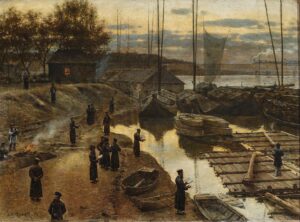
From Wikipedia: “… literally meaning ‘head [of] the year’, [Rosh Hashana] is the Jewish New Year … It is the first of the Jewish High Holy Days specified by Leviticus 23:23–32 that occur in the early autumn of the Northern Hemisphere. Rosh Hashanah is a two-day celebration that marks the beginning of the civil year, according to the teachings of Judaism, and is the traditional anniversary of the creation of Adam and Eve.
Rosh Hashanah customs include sounding the shofar (a cleaned-out ram’s horn), as prescribed in the Torah … Its rabbinical customs include attending synagogue services … as well as enjoying festive meals. Eating symbolic foods is now a tradition, such as apples dipped in honey, hoping to evoke a sweet new year.”
Yom Kippur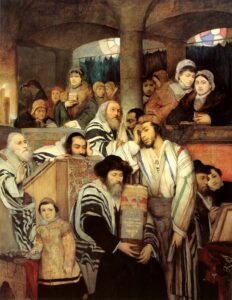
From Wikipedia: “… also known as the Day of Atonement, [Yom Kippur] is the holiest day of the year in Judaism. Its central themes are atonement and repentance. Jews traditionally observe this holy day with an approximate 25-hour period of fasting and intensive prayer, often spending most of the day in synagogue services.
Yom Kippur is … the ‘Sabbath of Sabbaths’. [It] completes the annual period known in Judaism as the High Holy Days or Yamim Nora’im (“Days of Awe”) that commences with Rosh Hashanah.”
Researching Jewish Heritage in The Family History Guide
Doing research for Jewish ancestors can be challenging, due to the various ethnic groups and wide dispersion (“diaspora”) of the Jewish people around the world. However, it offers the chance to learn quite a bit about history, cultures, and people.
In the Countries menu of The Family History Guide, click “Ethnic” to see the choice for Jewish research. An example from the first page is shown below.
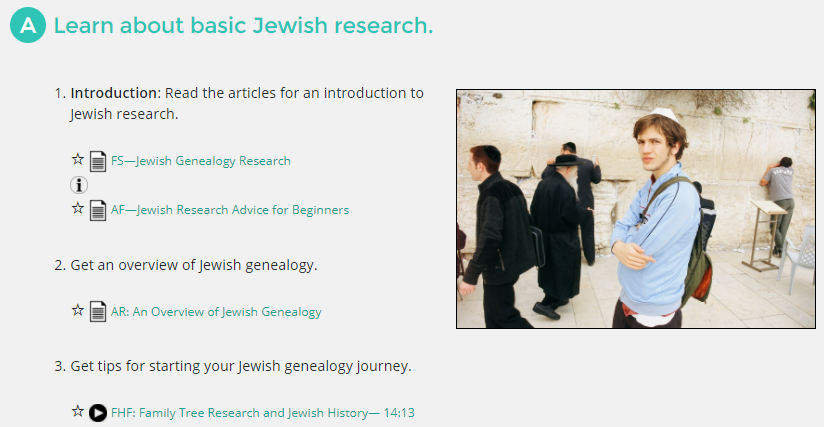
There are links to helpful articles and videos to get you started. The Goal pages for Jewish research include:
- 1: Research
- 2: Libraries and Archives
- 3: JewishGen Website
- 4: Holocaust Resources
- 5: Search Records
- 6: Get Help
There are also Jewish resources in many of the Country pages, typically in the Church and Cemetery Goals.
Let’s conclude with a few traditional Rosh Hashana greetings:
Shanah Tovah (“Have a good year”) and Shanah Tovah Umetukah (“Have a good and sweet year”).
